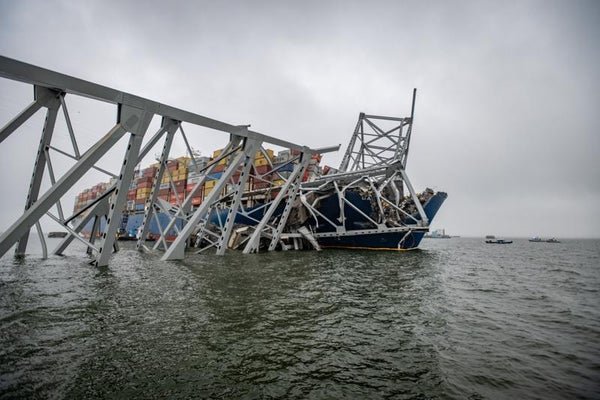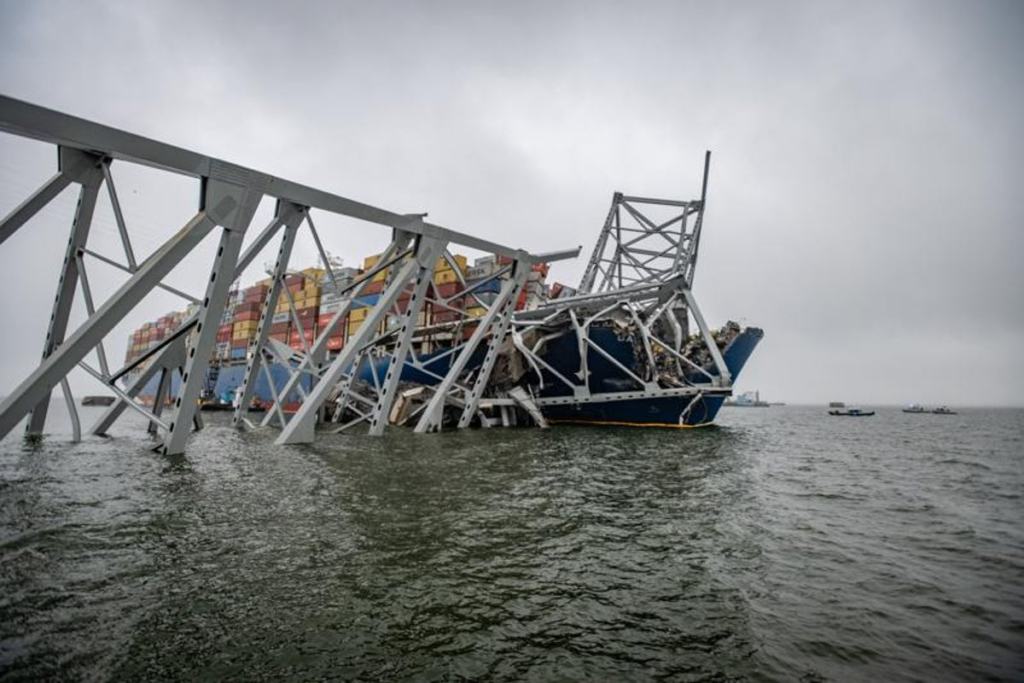Investigators Think They’ve Solved the Mystery of the Baltimore Bridge Crash
A tiny, misplaced label may have slowly loosened a critical wire on the ship that hit Baltimore’s Francis Scott Key Bridge, eventually causing a catastrophic failure

Jerry Jackson/Baltimore Sun/Tribune News Service via Getty Images
A tiny, misplaced label on the ship that hit the Francis Scott Key Bridge in Baltimore in 2024 may have caused the catastrophic crash that killed six people, U.S. officials revealed on Tuesday.
The Dali hit the bridge after a series of electrical blackouts and system failures that led to loss of propulsion and steering control in the early hours of March 26, 2024. The strike caused the structure to collapse into the water below.
Investigators at the National Transportation Safety Board (NTSB) have reported that a small label wrapped around a critical wire that was plugged into one of the many terminal boxes on the cargo ship had, over the course of years, caused the wire to come loose, tripping a breaker and causing the initial power outage on the ship.
On supporting science journalism
If you’re enjoying this article, consider supporting our award-winning journalism by subscribing. By purchasing a subscription you are helping to ensure the future of impactful stories about the discoveries and ideas shaping our world today.
“This tragedy should have never occurred,” said Jennifer Homendy, chair of the NTSB, said at a board meeting on Tuesday, according to the New York Times.
The report also found that the Dali’s crew had responded appropriately to the emergency. Because of the ship’s size and uncontrollable drifting, however, the crew’s actions to try to prevent the crash were ultimately futile.
It’s Time to Stand Up for Science
If you enjoyed this article, I’d like to ask for your support. Scientific American has served as an advocate for science and industry for 180 years, and right now may be the most critical moment in that two-century history.
I’ve been a Scientific American subscriber since I was 12 years old, and it helped shape the way I look at the world. SciAm always educates and delights me, and inspires a sense of awe for our vast, beautiful universe. I hope it does that for you, too.
If you subscribe to Scientific American, you help ensure that our coverage is centered on meaningful research and discovery; that we have the resources to report on the decisions that threaten labs across the U.S.; and that we support both budding and working scientists at a time when the value of science itself too often goes unrecognized.
In return, you get essential news, captivating podcasts, brilliant infographics, can’t-miss newsletters, must-watch videos, challenging games, and the science world’s best writing and reporting. You can even gift someone a subscription.
There has never been a more important time for us to stand up and show why science matters. I hope you’ll support us in that mission.

